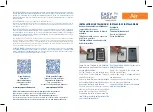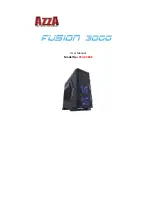
l
When cables are routed indoors, engineers are required indoors for cooperation.
l
The feeder window must be waterproofed.
Outdoor Cabling Requirements
l
Cables routed outdoors must be led through a pipe when they may be damaged.
l
AC power cables, transmission cables, and cables buried in the ground must be protected.
l
If cables at the cabinet bottom need to be routed through a pipe along the ground, lead the
pipe into the cabinet base for about 3 m (9.84 ft.) to 5 m (16.4 ft.), not into the cabinet.
Block the pipe with waterproof tape or silicon gel, and secure the pipe to the cable hole at
the cabinet bottom with metal piece.
l
If cables at the cabinet bottom need to be routed through a pipe along the metal cable trough,
do not lead the pipe into the cabinet base. The cable trough must be sealed and routed
through the cable hole at the cabinet bottom.
l
Cables are secured with cable clips.
l
Cables are routed neatly along the specified cabling direction and secured with cable clips.
l
The positions for cable clips are determined onsite. For example, the cable clips for the
7/8" feeder are installed at the spacing of 1.5 m (4.92 ft.) to 2 m (6.56 ft.) in the same
direction, and the cable clips for the power cables are installed at the spacing of 1 m (3.28
ft.) to 1.5 m (4.92 ft.) in the same direction.
l
Cable clips must be vertical with cables, and the cables in a cable clip must be parallel.
l
After routing cables neatly and correctly, tighten the screws on cable clips.
Secure cables on the cable tray, as shown in
RRU3942
Installation Guide
7 Installing RRU Cables
Issue ()
Huawei Proprietary and Confidential
Copyright © Huawei Technologies Co., Ltd.
58
















































